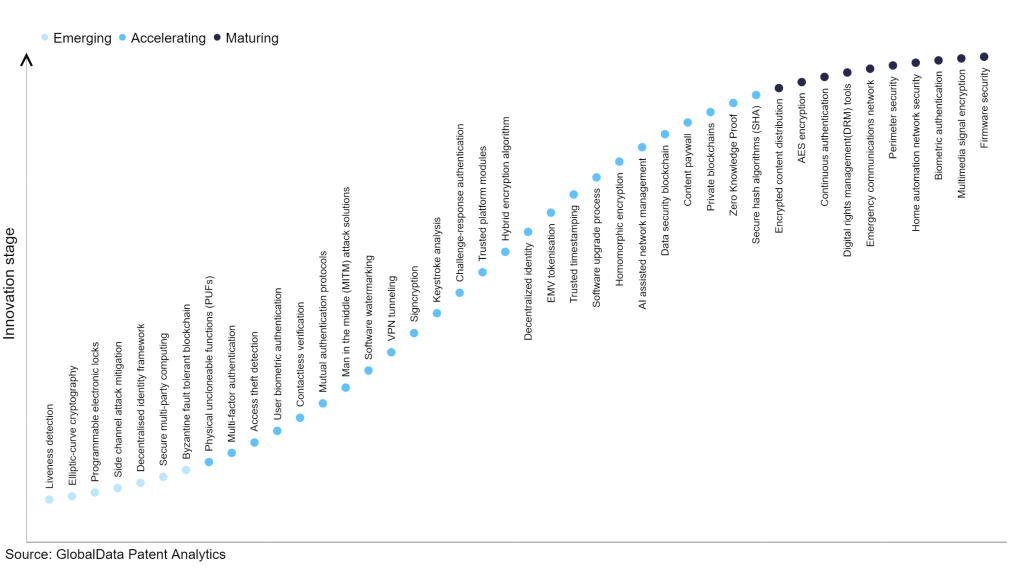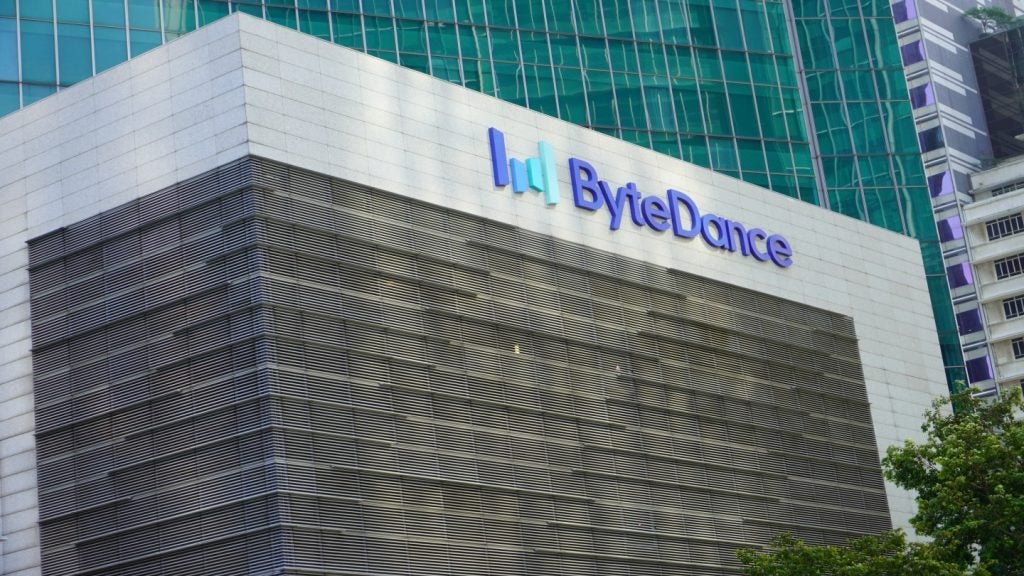The technology industry continues to be a hotbed of innovation, with activity driven by the increasing sophistication of cyber threats, compliance requirements, and the need for robust protection against data breaches, as well as growing importance of technologies such as next-generation firewalls (NGFWs), intrusion detection and prevention systems (IDPS), security information and event management (SIEM) systems, and advanced threat intelligence solutions to detect and respond to cyber threats more effectively. In the last three years alone, there have been over 3.6 million patents filed and granted in the technology industry, according to GlobalData’s report on Innovation in Cybersecurity: Perimeter security. Buy the report here.
However, not all innovations are equal and nor do they follow a constant upward trend. Instead, their evolution takes the form of an S-shaped curve that reflects their typical lifecycle from early emergence to accelerating adoption, before finally stabilising and reaching maturity.
Identifying where a particular innovation is on this journey, especially those that are in the emerging and accelerating stages, is essential for understanding their current level of adoption and the likely future trajectory and impact they will have.
300+ innovations will shape the technology industry
According to GlobalData’s Technology Foresights, which plots the S-curve for the technology industry using innovation intensity models built on over 2.5 million patents, there are 300+ innovation areas that will shape the future of the industry.
Within the emerging innovation stage, byzantine fault tolerant blockchain, secure multi-party computing, and decentralised identity framework are disruptive technologies that are in the early stages of application and should be tracked closely. Secure hash algorithms (SHA), zero knowledge proof, and private blockchains are some of the accelerating innovation areas, where adoption has been steadily increasing. Among maturing innovation areas are firmware security, multimedia signal encryption, and biometric authentication, which are now well established in the industry.
Innovation S-curve for cybersecurity in the technology industry

Perimeter security is a key innovation area in cybersecurity
Perimeter security involves safeguarding an area or structure from unauthorised access by effectively managing and monitoring entry and exit points. This is accomplished through a combination of physical barriers like walls, fences, or gates, along with electronic surveillance and access control systems.
GlobalData’s analysis also uncovers the companies at the forefront of each innovation area and assesses the potential reach and impact of their patenting activity across different applications and geographies. According to GlobalData, there are 1,020+ companies, spanning technology vendors, established technology companies, and up-and-coming start-ups engaged in the development and application of perimeter security.
Key players in perimeter security – a disruptive innovation in the technology industry
‘Application diversity’ measures the number of different applications identified for each relevant patent and broadly splits companies into either ‘niche’ or ‘diversified’ innovators.
‘Geographic reach’ refers to the number of different countries each relevant patent is registered in and reflects the breadth of geographic application intended, ranging from ‘global’ to ‘local’.
Patent volumes related to perimeter security
Source: GlobalData Patent Analytics
Qualcomm is one of the leading patent filers in perimeter security. The company’s patents are aimed at methods, systems, and devices related to signalling protocols for proximity service functions in a wireless communication system.
A first wireless device may identify a wireless relay requirement associated with the first wireless device. A proximity service protocol may be initiated between the first and second wireless device based at least in part on the identified wireless relay requirement. The proximity service protocol may be initiated prior to an initiation of a communication data exchange between the two wireless devices. A relay link may be established, via the ProSe protocol, between the first and second wireless device based at least in part on the identified wireless relay requirement.
Other prominent patent filers in the space include Samsung Group and Huawei.
By geographic reach, Jamf leads the pack, followed by Tomtom Development Germany and Oakridge International. In terms of application diversity, Memjet Technology holds the top position, followed by Augmenti and OrCam Technologies.
Cybersecurity innovation in perimeter security has become crucial in protecting organisations from external threats. Perimeter security solutions employ advanced technologies and strategies to secure networks and systems at their outer boundaries, preventing unauthorised access and malicious activities.
To further understand how cybersecurity is disrupting the technology industry, access GlobalData’s latest thematic research report on Cybersecurity – Thematic Research.
Data Insights
From

The gold standard of business intelligence.
Blending expert knowledge with cutting-edge technology, GlobalData’s unrivalled proprietary data will enable you to decode what’s happening in your market. You can make better informed decisions and gain a future-proof advantage over your competitors.







